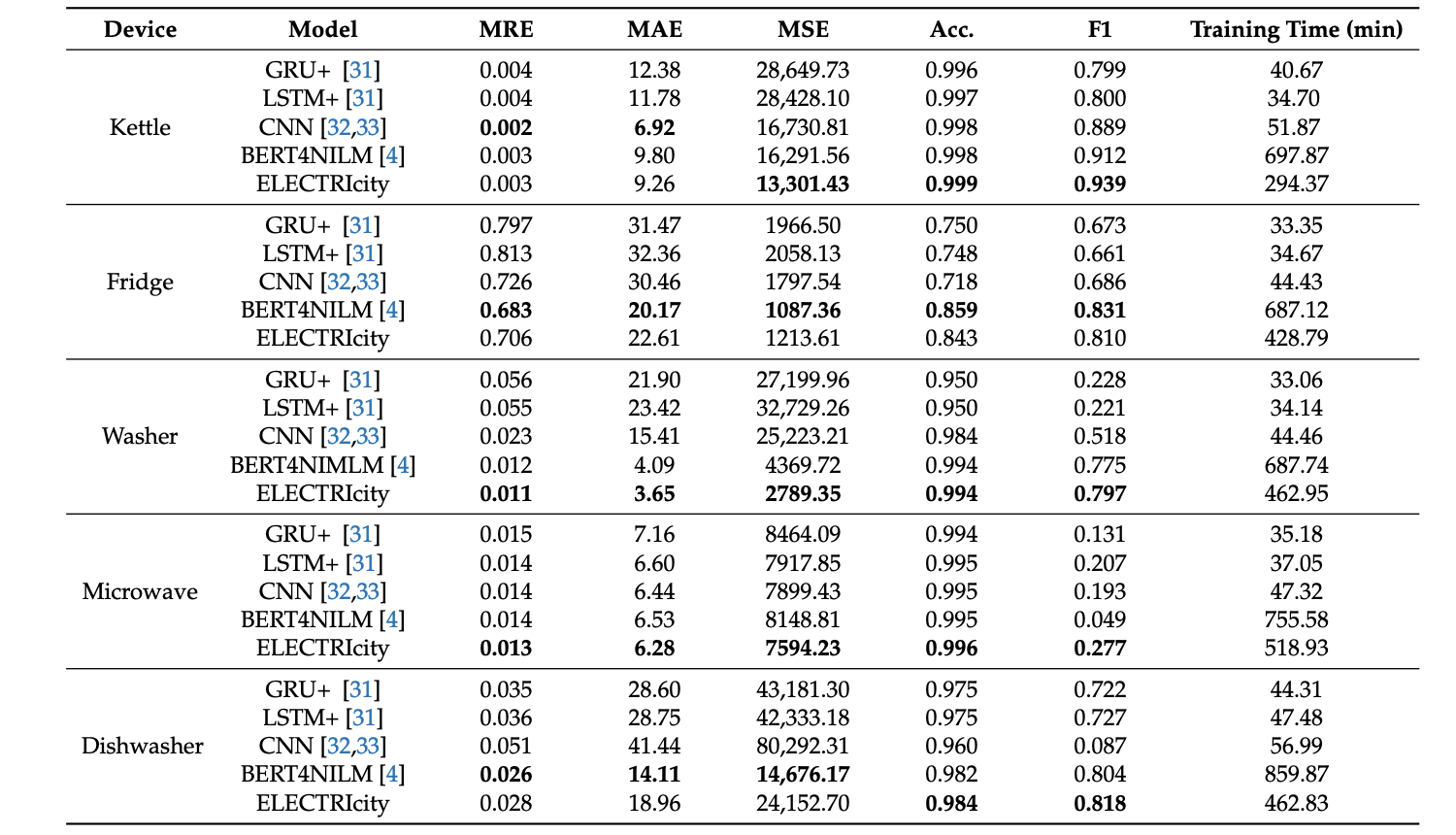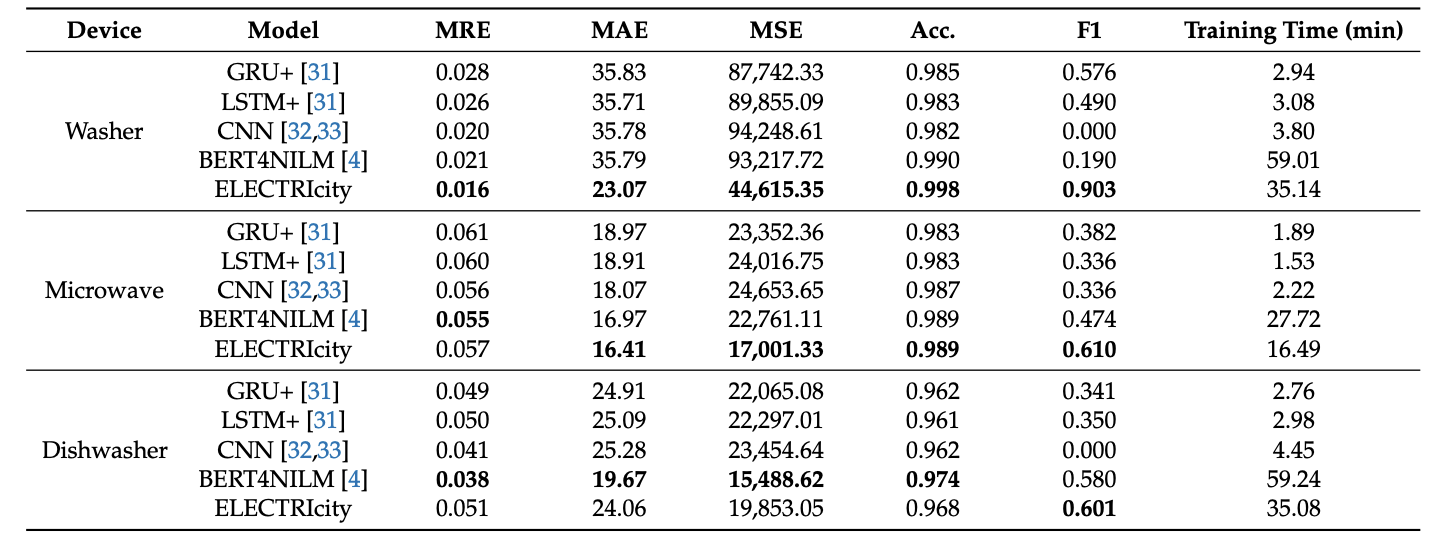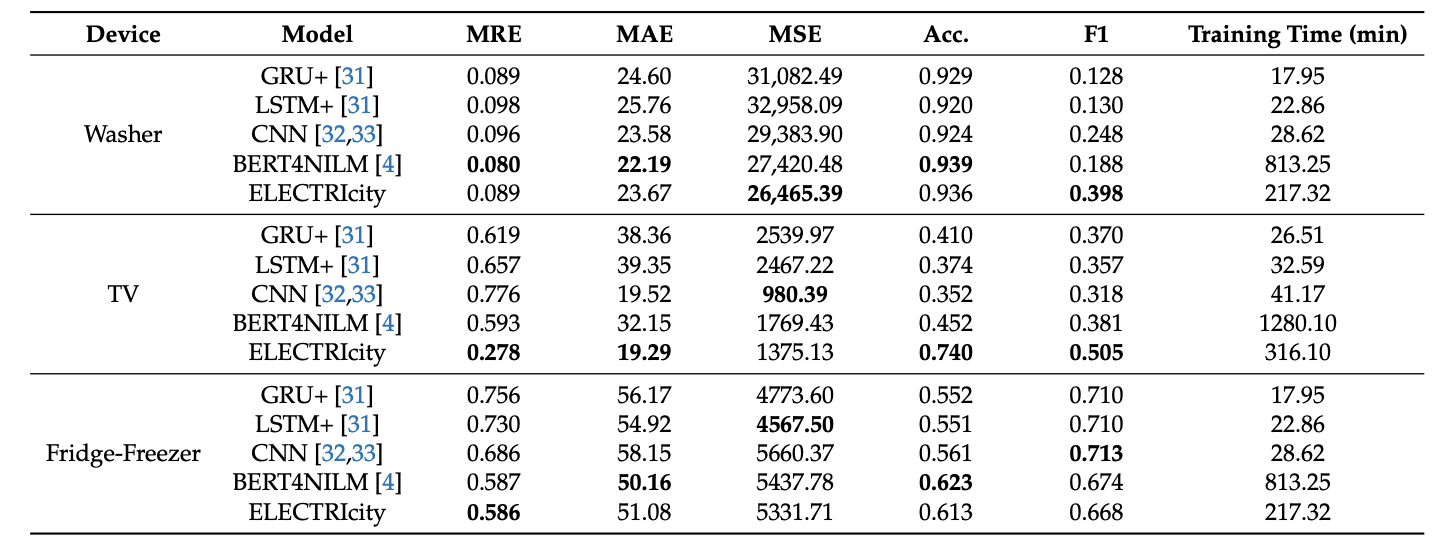Pytorch implementation of ELECTRIcity: An efficient Transformer for Non-Intrusive Load Monitoring. For any questions, feel free to contact me at stasykiotis@mail.ntua.gr
The csv datasets could be downloaded here: REDD, UK-DALE and Refit
For Refit, we used a slightly different folder structure. We have created .txt files with columns labels that are required during data processing. Please place the .csv files in the Data Folder for the code to work.
The folder structure in the data folder should be:
.
├── data
└── UK_Dale
│ └──House_1
│ │ ├── .
│ │ └── .
│ └──House_2
│ .
│ .
└── REDD
│ └──House_1
│ │ ├── .
│ │ └── .
│ └──House_2
│ ├── .
│ └── .
└── Refit
└──Data
│ House2.csv
│ House3.csv
│ House5.csv
│ House16.csv
└──Labels
House2.txt
House3.txt
House5.txt
House16.txt
This repository provides the end-to-end pipeline to train a model using ELECTRIcity.
The required packages to run the code can be found in electricity.yml. Model training and testing can be done by running the electricity.py python file.
python electricity.pyFirst, config.py provides all the hyperparameters required in the pipeline. Then, the script creates a dataset parser for either UK_Dale, Refit or Redd, depending on the choice of the user in config.py (arugment dataset_code). Trainer.py contains all the functions necessary to perform model training and testing.
After the model is trained and tested, the following results are exported in 'results/dataset_code/appliance_name/: 1)best_acc_model.pth contains the exported weights of the model 2)results.pkl contains several metrics that were recorded during training. 3)test_result.json contains the ground truth labels during testing, as well as the model prediction.
Our models are trained for 100 epochs for every appliance in each dataset, with the hyperparameters that can be found in config.py.
Please cite the following paper if you use our methods in your research:
@Article{s22082926,
AUTHOR = {Sykiotis, Stavros and Kaselimi, Maria and Doulamis, Anastasios and Doulamis, Nikolaos},
TITLE = {ELECTRIcity: An Efficient Transformer for Non-Intrusive Load Monitoring},
JOURNAL = {Sensors},
VOLUME = {22},
YEAR = {2022},
NUMBER = {8},
ARTICLE-NUMBER = {2926},
URL = {https://www.mdpi.com/1424-8220/22/8/2926},
ISSN = {1424-8220},
ABSTRACT = {Non-Intrusive Load Monitoring (NILM) describes the process of inferring the consumption pattern of appliances by only having access to the aggregated household signal. Sequence-to-sequence deep learning models have been firmly established as state-of-the-art approaches for NILM, in an attempt to identify the pattern of the appliance power consumption signal into the aggregated power signal. Exceeding the limitations of recurrent models that have been widely used in sequential modeling, this paper proposes a transformer-based architecture for NILM. Our approach, called ELECTRIcity, utilizes transformer layers to accurately estimate the power signal of domestic appliances by relying entirely on attention mechanisms to extract global dependencies between the aggregate and the domestic appliance signals. Another additive value of the proposed model is that ELECTRIcity works with minimal dataset pre-processing and without requiring data balancing. Furthermore, ELECTRIcity introduces an efficient training routine compared to other traditional transformer-based architectures. According to this routine, ELECTRIcity splits model training into unsupervised pre-training and downstream task fine-tuning, which yields performance increases in both predictive accuracy and training time decrease. Experimental results indicate ELECTRIcity’s superiority compared to several state-of-the-art methods.},
DOI = {10.3390/s22082926}
}
We used BERT4NILM by Yue et. al. as template for our code. We would like to thank the authors for their valuable work that has inspired ours!


